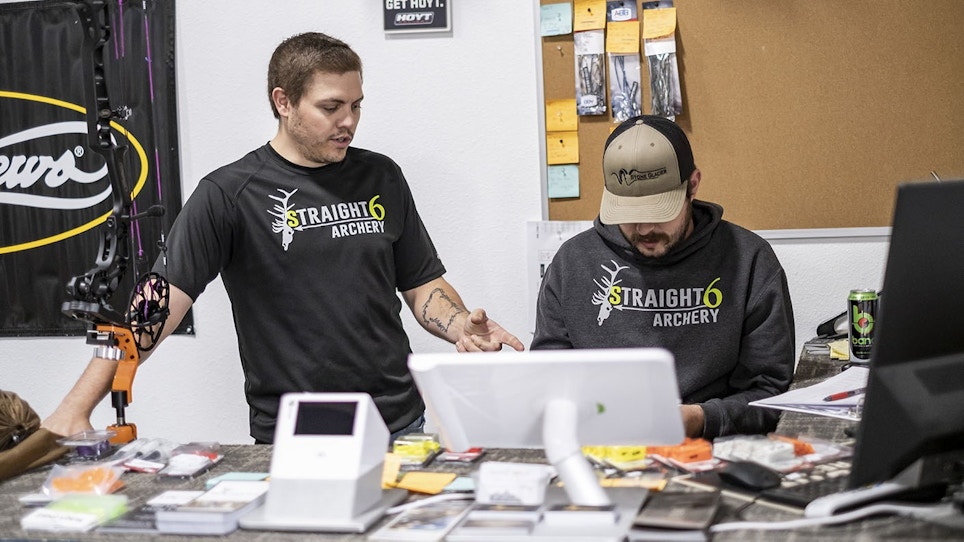Back when the fax machine was cutting-edge technology, I worked in a busy office where one of the senior managers would pick up the receiver and say, “Hello, fax machine,” if it happened to ring when he was walking by. He didn’t understand how the technology worked, and that made him appear silly and out of touch. In other areas of the business, however, this same man was a wealth of valuable knowledge. Both he and I could have benefitted from mentoring.
Traditional Mentorship
How does mentoring apply to a gun store or tactical business? Likely your experienced workers have serviced the same customers and same models of firearms for 10 years. This makes them an incredible asset to the company. They know the ins and outs of what sells in your area and how to keep the most popular models in top shape. That is all valuable information a seasoned veteran can impart to a young new hire to keep service seamless despite changes in personnel. It is a classic mentoring scenario, whether your company has an official mentoring program or it happens organically as new hires pair up with veterans to learn the ropes.
Mentoring has been proven to benefit new employees, the company and the mentor. The newer employee benefits from the mentor’s experience and knowledge, learning from mistakes the mentor made in the past if he or she is willing to share details. Working alongside a seasoned pro can also eliminate feelings of uncertainty and isolation. This benefits the company by shortening the breaking-in period for new employees. In general, a mentoring program improves company communication by bringing together people who may not otherwise gravitate toward each other.
Reverse Your Mentorship
Mentoring doesn’t always mean older workers teaching younger workers. Many companies today benefit from something called reverse mentoring. If you’ve had an 8-year-old show you how to do a hard reset on your iPad or explain to you what an emoji is, you’ve been in a reverse mentoring situation. You’ve probably imparted a lot of life lessons to that 8-year-old, but when it comes to technology, the student becomes the teacher.
There are many benefits to having a formal reverse mentoring program, but there are also pitfalls to watch out for. Sometimes old dogs don’t like learning new tricks. And sometimes trying to teach someone something that is second nature tries a person’s patience.
Implementing successful reverse mentorship relationships takes forethought and planning. Here are some tips for getting started.
Be specific. Identify a particular skill a senior team member would benefit from learning, and match that person with a younger team member who not only knows the skill but also has teaching ability. Patience is key. Also, be specific about the length of the mentoring time period. Set an end date.
Give a reason. Explain why the new skill needs to be learned. Maybe having another person fluent on the latest payroll software would be a time-saver. Maybe having more employees providing input into the company’s social media marketing would broaden its reach.
Be positive. Stress that this reverse mentorship activity is in no way a test or condition of employment, but rather a way to grow in the job. Some people are sensitive about their age and might feel threatened or insulted by the idea of having a younger mentor.
Sell it. If individuals seem reluctant to get on board, remind them that both sides can benefit from reverse mentoring. The mentee learns a valuable new skill, but so does the mentor. The mentor can now add training to the list of skills on their resume.
Give fair warning. Don’t just spring the idea of reverse mentorship on the workers you would like to have involved. Give them time to consider the idea. Make sure both are willing partners.
Make it convenient. Allow the mentor and mentee to set the ground rules of when they will meet, how long each meeting will be, and how many times they will meet. If it is convenient for both parties there is less risk of resentment.
Check the score at halftime. After a mentor and mentee have been meeting for awhile, check in with them individually to see how things are progressing. Make sure they both feel the other person is treating them respectfully. Does the older person think the training is going too fast or too slow? Does the mentor feel their colleague was paying attention, eager to learn and grateful for the new skills, or resentful of having to learn something new from a whippersnapper? If the employees you’ve paired up just aren’t clicking, maybe there are simple changes that can be made to make the program more successful. As a last resort, reassignment to a new mentor or mentee may be best.
Wrap-up party. At the end of the reverse mentoring period, meet with the mentor and mentee for a final review on how well the training went, what was achieved, what was not achieved. If goals were not met, ask what got in the way so improvements to the program can be made. Maybe the time period for mentoring needs to be extended.
Reverse Mentoring: A Win-Win
A successful reverse mentoring relationship can be energizing for the veteran employee and enriching for the less-experienced employee. Once the specified knowledge is imparted, the two may continue to have a mutually beneficial working relationship. The longtime employee now has someone they are comfortable consulting when technology questions arise. Conversely, the newbie may have newfound respect for the way things were done in the past and have a source for historical information about the company.
Success in business depends on everyone from the CEO on down to the newest hire working toward the same goals. With mentoring and reverse mentoring, you can improve communication and close the generation gap resulting in everyone in the company being on the same page.






